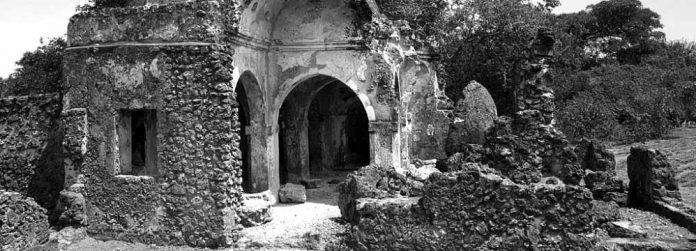History of Tanzania
Tanzania is an African country (click here to view a condensed version of profile of Tanzania) located in the Great Lakes region officially established in 1964, after the unification of a large area of the mainland called Tanganyika and the islands of Zanzibar. Tanganyika was a colony and part of German East Africa from the 1880s until the 1919s, once it was placed under the International Federation, it became a British colony. It served as an outpost for the British army during World War II, providing financial support, missiles, and troops. In 1947, Tanganyika was made a UN-sponsored territory, under British rule, a status that lasted until independence in 1961. Zanzibar flourished and became a center of trade, was ruled by the Portuguese, the Sultanate of Oman, and then eventually of the nineteenth century it came under British rule.
Julius Nyerere, the leader of the Tanganyika independence movement and the “father of the nation” of Tanganyika, led Tanzania for decades, whereby Abeid Amaan Karume, was the President of Zanzibar and the United Republic of Tanzania Vice President. After Nyerere’s retirement in 1985, economic and political reforms began. His presidency was taken over by President Ali Hassan Mwinyi.
Ancient History of Tanzania
Ancient Stone Age
History of Tanzania indicates that the area is home to some ancient human beings as discovered by archaeologists. Stone tools and historical relics have been found in the Olduvai Gorge area of northern Tanzania, an area known as the “Human Origin”. Acheulian stone tools were discovered there in 1931 by Dr. Louis Leakey, after correctly identifying the stones sent to Germany by Hans Reck as stone tools, Hans Reck owned an Olduvai caravan in 1913. In the same year Dr. Louis Leakey acquired stone tools used in similar eras from Olduvai Gorge. The tools were an example of the oldest human technology ever discovered in Africa, and later became known worldwide as Oldowani from the name Olduvai Gorge. The first human skull of Olduvai Gorge was discovered by Mary Leakey in 1959, and was named Zinj or Man Nutcracker, and the first example of Paranthropus boisei, estimated to be over 1.8 million years old. Another discovery involving the remains of Homo habilis took place.
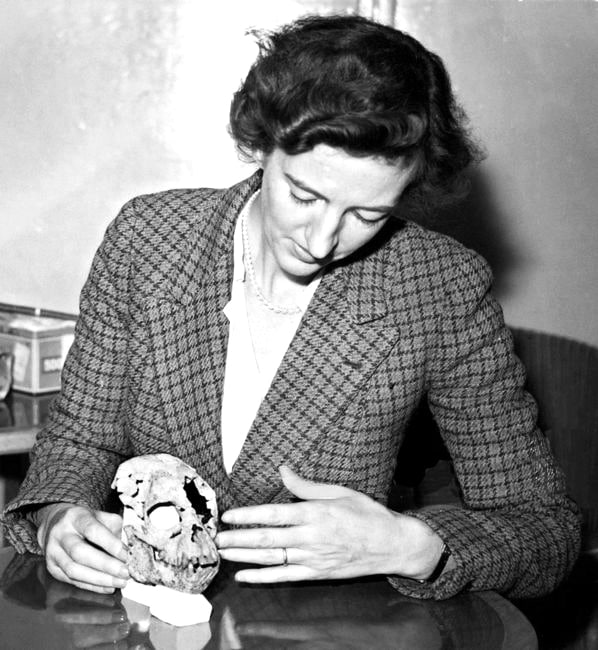
In 1978 Mary Leakey discovered ancient human footprints (Hominin) in the Laetoli areas, and they are called Laetoli footprints, estimated to be 3.6 million years old and are thought to be the footsteps of the Australopithecus afarensis family. The oldest human fossils ever discovered in Tanzania come from Laetoli as well and are between 3.6 million to 3.8 million years old of the Australopithecus afarensis family — Louis Leakey discovered what he called a monkey tooth in Laetoli in 1935 (which has not been identified as afarensis until 1979), a piece of jaw of an ancient three-toothed human was picked up by Kohl-Larsen in 1938-39, and in 1974-75. Mary Leakey discovered 42 teeth and several jaws from the area.
The Middle Stone Ages
The Mumba Cave in northern Tanzania showcases events in the Middle Ages and the Last Stone Age. The Middle Ages of stone represent the period in which archaeologists see the beginning of modern human behavior.
The Late Stone Age and Neolithic Pastoralists
By about 10,000 years into the Stone Age, Tanzania is believed to have had a large population of hunter-gatherers and collectors, it is believed that they were a group of Khoisans. An estimated 4,000 to 3,000 years ago, during the so-called Neolithic pastoralists, herdsmen of cattle, sheep, goats, and donkeys came to Tanzania from the north(whose people spoke the Southern Ethiopian language), and Elmenteitan (whose people spoke the Southern Nilotic language). Luxmanda is the largest and most popular area in the south with Neolithic Livestock keepers in Tanzania.
Metal Age
About 2000 years ago, Bantu people began to arrive in groups from West Africa, and the event is called Bantu Expansion. These groups brought in and developed skills in metal carving, agriculture, and new ideas of social and political structure. They were more in numbers and hence took over the Cushites who preceded them, plus the remaining Khoisans. Later the Nilotic pastoralists arrived, and continued to migrate to this area until the 18th century.
One of the most important geological areas in the history of Tanzania is Engaruka located in the East African Rift Valley, this area includes the irrigation and farming system used at the time.
History of Tanzania’s Old Coast
Travelers and traders from the Persian Gulf and West India toured the East African coast from the beginning of the first millennium CE. Ancient Greek texts such as the Periplus of the Erythraean Sea and the Geography of Ptolemy mention lists of existing markets in coastal areas. The presence of Roman-era coins in coastal areas reflects the presence of trade, and Ptolomey’s geography refers to the city of Rhapta as the capital of a political system called Azania. Archaeologists have not been able to locate Rhapta, although many believe that it is located in the delta of the Rufiji River. Apart from these ancient writings nothing has been written about the coast for a long time until the Arab geographical libraries were written.
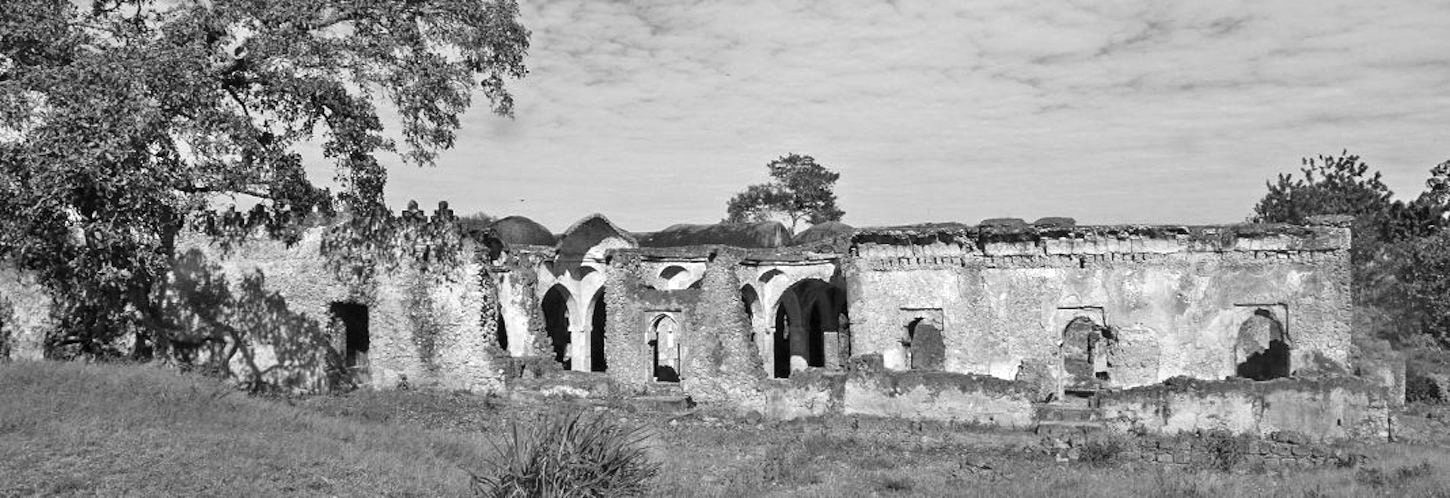
The remains of cultural materials in those cities, prove that their culture was based on indigenous, not foreign, origins. And they spoke Swahili (which is the national language of Tanzania), this language is among the Bantu languages that did spread from the north coast of Kenya before the arrival of the Arabs. At the beginning of the second millennium CE Swahili cities developed thriving businesses and included Africans from the mainland and trade partners from all over the Indian Ocean. Starting c. 1200 to 1500 CE, the city of Kilwa, on the southern coast of Tanzania, is considered to be the richest and most powerful city in the world, a period that scholars call the “Golden Age” of Swahili culture and civilization. In the 14th century, Ibn Battuta, a Berber traveler from North Africa, visited Kilwa and declared it one of the best cities in the world. Islam got established on the Swahili Coast in the early eighth or ninth century CE.
In 1498, Portuguese explorer Vasco Da Gama was the first white man to reach the shores of the Great Lakes of Africa; and stayed for 32 days. As a result, in year 1505, the island of Zanzibar was taken over by the Portuguese. Portuguese rule ceased at the beginning of the 18th century, when Arabs from Oman established settlement in the area. With the help of the Arabs, the natives of the coast succeeded in ousting the Portuguese from the northern part of the Ruvuma River in the early 18th century.
After claiming that the Coastal Zone belonged to him, Omani Sultan Seyyid Said relocated his headquarters to Zanzibar in 1840. He focused more on the island of Zanzibar, established and developed various trade routes that reached as far as Lake Tanganyika and Central Africa. throughout this era, Zanzibar turned out to be the most booming place to trade slaves. Due to the existence of the Arab and Persian regimes during that period, the Europeans misinterpreted Swahili civilization, believing it to be the product of Arab colonialism. However, within the last 40 years people have begun to understand that Swahili civilization has its origins in Africa, dispelling the misconception that it originated with the Arabs.
Tanganyika (1850 –1890)
Tanganyika as a geographical and political area did not look good before the period of Imperialism; even its name came into use after Germany of East Africa handed over its powers to the British under the United Nations in 1920. So what is referred to here is the history of this region which was later called Tanzania. It was located in the Great Lakes region and was known as the western shores of Lake Victoria and included many smaller kingdoms, such as Karagwe and Buzinza, areas once ruled by powerful neighbors such as Rwanda, Burundi, and Buganda.
The Europeans began exploring the mainland in the middle of the 19th century. History of Tanzania indicates that in 1848 the German missionary Johannes Rebmann was the first white to see Mount Kilimanjaro.
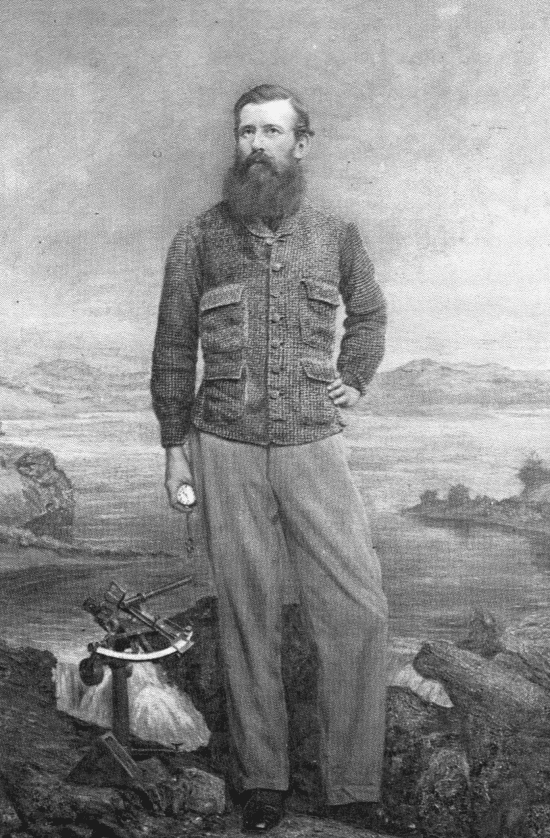
English explorer Richard Burton and John Speke arrived at Lake Tanganyika in June, 1857. In January 1866, Scottish explorer and missionary David Livingstone, who preached the abolition of the slave trade, arrived in Zanzibar, searching for the source of the Nile River, and set up his last service in Ujiji located on the shores of Lake Tanganyika. After losing contact with his colleagues for many years, he was found there on November 10, 1871. Henry Morton Stanley, the man sent by the New York Herald to look for him, said hello to him with the famous words “Dr. Livingistone, I presume?” In 1877, Belgian caravans arrived in Zanzibar. As a result of these caravans, in 1879 the station was established in Kigoma on the east shore of Lake Tanganyika, followed by the Mpala station that was established opposite the western shore of the lake.
All the centers were established under the name Comite D’Etudes Du Haut Congo, the forerunner of the Free State of Congo. Germany began planning to have colonies in 1884. Karl Peters, the founder of the German Colonial Society, signed many treaties with tribal leaders that led to the expropriation of their territories. In 1885 the government of the son of Emperor Otto von Bismarck provided protection for all territories occupied by the German East Africa Company, founded by Peters with the support of the Bismark government.
At the Berlin Conference of 1885, given that Kigoma had already established trade ties with Bagamoyo as well as Zanzibar, it persuaded East African Germany to integrate it with the Congo Basin region, and it became a huge benefit to Belgium. At that conference in Berlin, in contrast to widespread rumors, Africa was not divided, but rather, laws were enacted among the colonists on how to establish colonies. While the Belgians preferred the Congo River area, the British and Germans focused more on the East African region, and in 1886 they divided the East African continent among themselves; The Sultanate of Zanzibar, was reduced to the islands of Zanzibar and Pemba, and the islands remained independent for a time. The Free State of Congo handed over to Germany the territory of Kigoma (its largest center in Central Africa) and all areas east of Lake Tanganyika.
East Africa Germany
The Germans were able to establish East Germany after eliminating all continental opposition against them. They violently established their power regardless of the existing administrative structures. Although the German colonists brought trade, railways, and roads to Tanganyika, their rule still was met with opposition from Africans. Between 1891 and 1894, the Hehe, led by Chief Mkwawa – opposed the German expansion, and later lost. After a period of guerrilla warfare, Mkwawa committed suicide as he was about to be arrested in 1898.
Maji Maji War
Rumors of public dissatisfaction with the current situation arose, and within 1902 the indigenous movement against the use of cotton in the fields began along the Rufiji River. In July, 1905 tensions escalated when the Nandete militia led by Kinjeketile Ngwale brought opposition against their government officials (captains) and suddenly the opposition increased from Dar Es Salaam to the Uluguru Mountains, Kilombero Basin, Mahenge areas, and Makonde, south of Ruvuma and Kilwa, Songea, Masasi, and from Kilosa to Iringa to the east shores of Lake Nyasa (Lake Malawi). The opposition led to the outbreak of the Cold War, which lasted from 1905 to 1907. The war, which united the southern tribes for some time, ended with an estimated 120,000 Africans dying from fighting and famine. Research shows that traditional animosity contributed to a major part of this war.
By 1897 the area of Tanganyika had been occupied by the Germans, and it affected the daily lives of the people as a whole. The Germans were assisted by missionaries who tried to destroy traditional beliefs, demolished the ‘mahoka’ huts used by the natives to worship their spirits, and ridiculed their various rituals, dances and ceremonies. These events cannot be forgotten or forgiven; The first fighting in the Uwereka area in September 1905 Under the governorship of Count Gustav Adolf von Götzen sparked a major war that resulted in the massacre of people of all classes including farmers, investors, missionaries, planters, villagers, and natives. Known as the Maji maji War, it was a ruthless war, and bloodshed was raging in Tanganyika.
World War I
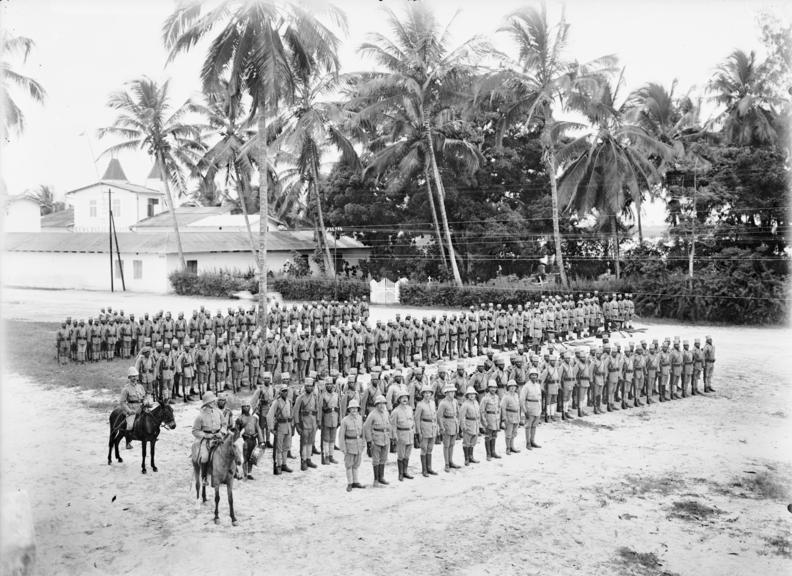
Before the outbreak of war, Germany was ready to fight without delay any attack they would face. In the first year of hostilities, the Germans were strong enough to carry out military operations in neighboring areas, for example they were able to repeatedly invade British East African railways. The strength of the German army at the beginning of the war was unknown. Lieutenant-General Jan Smuts, commander of the British East African Army in early 1916, estimated the German army to have 2,000 Germans, and 16,000 local soldiers. In 1913 the white male population was over 3,500 (exclusive of the German battalion). Also, about 7,000,000 natives formed a reserve army, which was to be used in areas with a shortage of German officers. “It was 100% certain that the Germans utilized their military during the … .. almost eighteen months which indicated the distinction between the event of battle against power in their region.”
The German geography of East Africa was a major obstacle for the British and its allies. The coastline had few good places for planes to land due to having dirty pools. The lakes and mountains to the west were impassable. Belgian forces from Belgian Congo were forced to go through Uganda. To the south, the Ruvuma River flows could only be used on a few sections of the upper reaches of the river. To the north, there was a five-mile road between the Upareni Mountains, and Mount Kilimanjaro, and the area was guarded by the Germans for 18 months.
The Germans began hostilities in 1914 with an unsuccessful invasion from Tanga city. The British invaded the city in November, 1914 but were stopped by General Paul von Lettow-Vorbeck’s forces in the Battle of Tanga. The British Navy and the Royal Empire captured the island of Mafia in January 1915. However, “Be that as it may, “The capture of Tanga and the resulting small-scale support [showcased] power ….……. of [German forces] and provided proof that the armies had to prepare themselves before invading [East Germany]. Such a business should ……. waiting for the friendly environment of European war zones or elsewhere. But in July 1915, the last German force was S.W. Africa surrendered… .. and the essence of violence… became known. ” The British battalions from the upper east and southwest and the Belgian military from the northwest assaulted and vanquished the German powers toward the beginning of January 1916.
In October 1916, General Smuts stated, “aside from the fields of Mahenge [the Germans] did lose each beautiful and valuable spot in their colony.”
Coming from Germany, General Von Lettow campaigned in the jungle throughout 1917, urging people to abandon their lands and spread across vast territories. In December, the remaining German troops were transferred to Portuguese Mozambique via the Ruvuma River. The troops were estimated to be 320 Germans, and 2,500 local soldiers. 1618 Germans and 5482 local soldiers were captured or killed within six months of 1917. In November 1918, the surviving soldiers laid down their arms and gave up near what is now Mbala, Zambia. There were 155 Europeans, 1165 local soldiers, 2294 African porters, and 819 African women.
Under the Treaty of Versailles, Germany lost all its colonies, including East Africa Germany. Britain lost 3443 men in war, it also lost 6558 men to disease. And 683 Belgians died in the war, while 1300 died of disease. Germany lost 734 Europeans, and 1798 Africans.
Von Lettow’s policy of destroying everything that would be useful including buildings of their enemy who would become the new ruler meant destroying the entire education system established by the government, however mission schools succeeded in continuing to provide education of that structure. Unlike Belgium, Britain, the colonial rulers of Central Africa, the French and the Portuguese, Germany established an education program for Africans and included primary, secondary, and vocational education. “The abilities of the educators, the instructive arrangement, the books, the materials for educating, all had startling standards in contrast with elsewhere in the African wildernesses.” In 1924, ten years after the episode of World War I, and six years of British rule, a visiting American named Phelps-Stokes reported: On the school side, Germany did wonders. It will take a long time to reach the standards of education that the German has achieved. By 1920, the Department of Education had one officer, two clerks and a budget equal to 1% of the country’s revenue – a smaller amount than the cost of repairing a state house.
British Rule after World War I
In 1919, the population was estimated at 3,500,000.
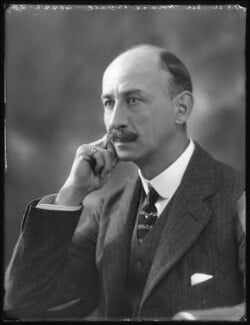
The first British ruler after the end of World War I was Mr. Horace Archer Byatt CMG, appointed by the royal commission on 31 January 1919. The colony was renamed Tanganyika Territory in January, 1920 In 1920 by order of the Tanganyika council, territorial boundaries, central council, offices of the governor and commander-in-chief were established.
England and Belgium consented to an arrangement on the border separating Tanganyika and Rwanda-Urundi in 1924.
The Tanganyika regime continued to run at the behest of the ruler until it was transformed into a Trusteeship System under the Charter of the United Nations by the Trusteeship Agreement on 13 December 1946.
British Rule Using Traditional Authority
Governor Byatt decided to take steps to revive African institutions by promoting traditional rule. In 1922 he approved the establishment of political clubs such as the Tanganyika Territory African Civil Service Association, which in 1929 renamed the Tanganyika African Association (TAA) and formed the basis for the independence movement. Under the Native Authority Ordinances Act of 1923, some chiefs were given incomplete administrative authority in accordance with customary law.
Mr. Donald Cameron was governor of Tanganyika in 1925. “His work… was vital in propelling the colonial rule policies, firmly connected to endeavors to set up an arrangement of ‘Indirect access Administration’ using indigenous customary powers. ” He was a major critic of Governor Byatt on the policy of back door rule, as proved in his first document of Customary Administration, and in his document on Indigenous Governance Guidelines as well as its Application.
In 1926, the House of Representatives was formed with seven informal members (including two Indians) and 13 official members, and its function was to advise and approve the directives issued by the governor. In 1945, the first Africans were elected to the council. The council was reorganized in 1948 under Governor Edward Twining, with 15 informal members (7 whites, 4 Africans, 4 Indians) and 14 official members. Nyerere was one of the informal members in 1954. The Council was reorganized in 1955 with 44 informal members (10 whites, 10 Africans, 10 Indians, and 14 government representatives) and 17 official members.
Governor Cameron enacted the Customary Courts Act No.5, which removed them from the jurisdiction of the colonial courts, and set up a system of appeal with the final arbitrator being the governor himself.
Rail Development
In 1928, the Tabora to Mwanza railway was launched. And the Moshi to Arusha railway was launched in 1930.
1931 census
In 1931 a census of the people of Tanganyika and the population was 5,022,640, the population of Asia was 32,398, and about 8,228 whites.
Education and Health Programs
Under British rule, efforts were made to combat mosquitoes (insect-borne parasites), malaria and schistosomiasis; and many hospitals were built. In 1926, the colonial administration provided subsidies for the operation of missionary schools, and the authorities were also involved in the management of education as well as providing guidelines. In 1935, the education budget for the entire country of Tanganyika was US $ 290,000, although it is not known what its real value is in terms of the purchasing power of the period.
Tanganyika Wheat Agriculture Project
The British decided to develop wheat farming to feed the British war victims and their European allies when they won and ended World War II. An American rancher in Tanganyika, Freddie Smith, was in control, and David Gordon Hines was the accounting personnel. The project was 50,000 acres (202km2) in the Ardai open areas just outside Arusha; 25,000 acres (101 km2) on Mount Kilimanjaro; and 25,000 acres (101 km2) towards Ngorongoro on the west side. All used machines were leased from the United States, including 30 tractors, 30 plows, and 30 mustard. There were agricultural managers and agricultural implementers from the west. Most of the crew were Italian prisoners of war from Somalia and Ethiopia: who were good engineers and mechanics. The Ardai breeding area was very arid and difficult to produce, but the Kilimanjaro and Ngongoro areas had good yields.
World War II
Two days after the German Nazi invasion of Poland, Britain declared war, and its Tanzanian forces were ordered to arrest German men living in Tanganyika. The British government feared that Axis (pro-German) men would try to help Axis forces, and some Germans living in Dar es Salaam made efforts to liberate the country but were silenced and arrested by Roald Dahl and a small group of troops in Tanganyika known as the King’s African Rifles.
About 100,000 people from Tanganyika joined the Allied forces (forces of British-backed countries) and they were part of the 375,000 English forces that fought against the Axis forces (forces of German-backed countries). The dissidents fought under a group called the African King’s Rifle and fought in the East African campaign in Somalia and Abyssinia against the Italians, Madagascar against the Vichy French during the Madagascar campaign, and Burma against the Japanese during the Burma Campaign. Tanganyika was a food-producing hub, and the economy generated by exports increased significantly. Although the economy grew, the war affected the country’s pricing system.
Transition Towards Independence
In 1947, Tanganyika became a UN-sponsored area under British rule. “It is geology, geography, legislative issues, settlement structure and history that have made Tanganyika the main nation under the support of the United Nations.” 66% of the people lived in one-tenth of the country due to water scarcity, soil erosion, precarious rains, mosquito infestations, and transportation and communication infrastructure which was a minimum.
In 1957, only 15 cities had a population of 5,000, and Dar es Salaam was the nation’s most populous city, with a population of 128,742. Tanganyika had a population of different races and backgrounds, making it a unique country among the world’s most trusted countries. In 1957 the total number of non-Africans was 123,310 divided as follows: 95,636 Asians and Arabs (65,461 Indians, 6,299 Pakistanis, 4,776 Indians, and 19,100 Arabs), 3,114 Somalis, and 3,782 non-whites, and 3,782 The majority of whites, comprising Europeans (British, Italians, Greeks, and Germans), and South African whites, 20,598. Economic structure and the Tanganyika tribes plagued the British who did set out policies aimed at building an African economy that is dependent on Europeans and a system that also enables them to remain stewards of African politics.
Many Africans at the time were government workers, traders, laborers, and producers of trade. But most people were subsistence farmers who were producing inadequate food. The status of housing, clothing, and other social services was low for most. Asians and The Arabs were middle-income and were doing wholesale and retail trade. Whites were preachers, experts and government workers, and administrators and proprietors of ranches, mines, and different organizations. “White ranchers were significant as they were the principle makers of products sold externally.”
The United Kingdom, under its colonial official David Gordon Hines, encouraged the establishment and development of cooperative agricultural associations to help farmers change from subsistence farming to commercial farming. Subsistence farmers sold their produce to Indians at very low prices. By the 1950s, cooperatives reached more than 400 nationally. [Cooperatives formed “unity” in their areas and established factories for the cotton, coffee, and tobacco drying plants. The biggest success in Tanzania was the Moshi coffee auction which attracted international buyers after the Nairobi auction last year.
A disaster-stricken Tanganyika peanut farming project was launched in 1946 and abandoned in 1951. After Tanganyika became a UN-sponsored region, Britain received a major impetus for political development. The British Code of “Procedure” became a threat to them and they threw it away a few days before independence. Five guests from the United Nations visited Tanganyika, the United Nations received hundreds of Application documents, and many oral presentations were made in New York’s discussion rooms between 1948, and 1960. United Nations, and Africans who used the United Nations to achieve their goals exerted a strong influence in the struggle for Tanganyika’s independence.
Tanganyika Africans attended the meetings with UN representatives. There were farmers, urban workers, government employees, and chiefs as well as special people who were able to present to the United States a variety of information that required immediate decisions. Eventually, powerful African reformers emerged to oversee the political movement. Their aim was to bring about a better development of African politics, and many of them supported the liberation movement, which was based on the African Association (AA) formed in 1929 as a civil society of Africans who are government employees in Dar es Salaam and Zanzibar. AA was renamed in 1948 to the Tanganyika African Association (TAA), and then ceased to be involved in Zanzibar events.
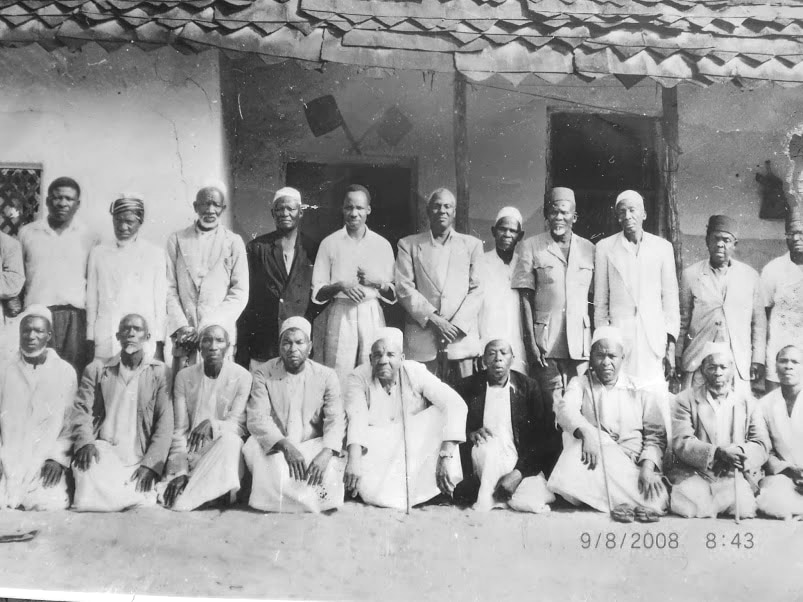
Early in 1954, the Tanganyika African National Union (TANU) political party was formed by Julius Nyerere as the successor to TAA. TANU won the House of Representatives elections in 1958, 1959, and 1960, and Nyerere was elected prime minister after the 1960 election. A democratically elected government began May 1, 1961 followed by the independent acquisition on December 9, 1961.
Zanzibar
Today’s Zanzibar is made up of an island called Zanzibar, or popularly known as Unguja, as well as the neighboring island of Pemba. All the islands were ruled by the Portuguese in the 16th and 17th centuries, and later the 18th century were ruled by the Omani Arabs. The long-standing Arab regime in Zanzibar belonged to Sultan Seyyid Said, who relocated his headquarters to Zanzibar from Muscat, also established an elite Arab regime, and encouraged the establishment and development of clove plantations, using slaves. Zanzibar and Pemba were world-renowned for the spice trade, until they were named Spice Islands; At the beginning of the 20th century, they produced about 90% of the world’s cloves. Zanzibar was also a major transit hub between the Great Lakes of Africa and the slave trade held in the Indian Ocean region (see Arab slave trade). Zanzibar attracted ships from as far away as the United States, which decided to open its embassy in Zanzibar in 1833. Britain’s first intention in Zanzibar was to trade and implement his decision to end the slave trade. In 1822, the British signed its first treaty with Sultan Said to deal with the slave trade, but it was not until 1876 that slave trade finally came to an end. The Heligoland Zanzibar Treaty of 1890 made Zanzibar and Pemba under British rule. And the Caprivi region of Namibia became a German colony. The British ruled Zanzibar through the Sultan from the late 19th century until 1957, when parliamentary elections were held.
Independence and Union of Tanganyika and Zanzibar
In 1954, Julius Nyerere, a teacher who was one of only two Tanganyikas with a university education, founded the political party TANU (Tanganyika African National Union). On December 9, 1961, Tanganyika gained independence, but remained under the British monarchy, and Nyerere was elected Prime Minister, under a new constitution. On December 9, 1962, a new constitution was drafted for the Republic of Tanganyika.
Zanzibar gained its independence from the British on December 10, 1963, and gained the status of a constitutional monarchy under the rule of the Sultan. On January 12, 1964, the majority of Africans overthrew the sultan and a new government was formed by ASP leader Abeid Karume, who became the President of Zanzibar and chairman of the Revolutionary Council. In the early days of the Zanzibar Revolution between 5,000 and 15,000 Indians and Arabs were killed. During the continuation of the violence, supporters of extremist John Okello committed acts of rape, destroying homes and property. Within a few weeks, one-fifth of people died or fled into exile.
It was then that the Tanganyika army decided to intervene and Julius Nyerere asked Britain to send troops. The Royal Ship Commandos were airlifted from the UK via Nairobi, and were 40 Commandos who landed on the beach with the aircraft carrier HMS Bulwark. The commanders spent months marching around the country and disarming various military groups. The commandos withdrew after completing the operation, leaving Canadian troops to retrieve the military operation.
On April 26, 1964, Tanganyika joined the Islands of Zanzibar to create the United Republic of Tanganyika and Zanzibar. On October 29, 1964, they changed their name to the United Republic of Tanzania. The name Tanzania comes from the names Tanganyika and Zanzibar. As a result of the union agreement, the Government of Zanzibar continues to have its internal authority.
Recent History of Tanzania
To form one party, Julius Nyerere merged TANU with the Zanzibar party, the Afro-Shirazi Party (ASP) and formed the CCM (A Revolutionary Party), on February 5, 1977. The union was strengthened by the principles of the union’s constitution in 1982, and re-ratified by the 1984 constitution.
Nyerere believed that a multi-party system, in a multi-ethnic country, would be a threat to national unity and so he sought ways to develop a one-party system. After colonialism and in an unstable social environment, Nyerere, recognizing the potential divisions caused by ethnicity, denounced racism in national politics. To achieve his goal of building unity he maintained Kiswahili as the national language.
Nyerere introduced a system of African socialism, or Ujamaa, meaning ‘family-hood’. Nyerere’s government made socialist philosophies a guide to national development; The government deliberately insisted on reducing the population in urban areas and sending them to rural production. Tanzania’s capital, Dar es Salaam, has been a major victim of this for a long time, especially since it was considered as a reminder of the colonial rule by Nyerere’s regime.
The scope of government increased rapidly in almost every sector. In 1967, nationalization of properties made the government become the country’s largest employer. The government was responsible for everything from retail trade to import and export, as well as banks. This situation led to the rise of corruption. Monopoly increased and high taxes were imposed, leading to economic ruin. Large amounts of government money were squandered and misappropriated. Purchasing power declined sharply, making essential commodities scarce. The established permit system gave officials the opportunity to collect high levels of bribes in exchange for permits. The foundation for corruption was built. Officers became popularly known as Benzi (“Benzi people”). By mid-1979, corruption reached the point where it became a national catastrophe until the country’s economy collapsed.
Nyerere’s Tanzania had close ties to the People’s Republic of China, Britain and Germany. In 1979 Tanzania declared war on Uganda after Uganda invaded the Kagera region in northern Tanzania. Tanzania through its military succeeded in removing the Ugandan army from the country. On April 11, 1979, Ugandan President Idi Amin was forced to leave the capital Kampala and flee into exile, ending the Uganda-Tanzania War. The Tanzanian army captured Kampala with the help of Ugandan and Rwandan guerrilla forces. Amin ran into exile.
In October 1985, Nyerere passed over the power to Ali Hassan Mwinyi, but remained the leader of the ruling party, the Chama cha Mapinduzi (CCM), as chairman until 1990, when he handed over the reins to Mwinyi.
In 1990, there were ethnic and cultural tensions between Zanzibar groups that needed to hold a referendum on independence. They proclaimed that the joint with Tanzania’s mainland, was because of the socialist dead ideologies, and had changed Zanzibar from a financially incredible country to a helpless territory. Their wishes were ignored.
That said, the ruling party won an election rigged by electoral laws, and its candidate Benjamin Mkapa was sworn in as Tanzania’s new president, and was the first multi-party system held on November 23, 1995. Competitive elections by the end of the year 2000 led to the Zanzibar massacre in January 2001, the government shot dead protesters, killing 35 people and wounding 600. Mr. Jakaya Mrisho Kikwete became the fourth president for a 5 year term in December 2005, .
In 1998 the US embassy in Dar es Salaam was bombed; and the embassy in Nairobi, Kenya was also blown up. In 2004, an undersea earthquake in the Indian Ocean caused a tsunami on the Tanzania beaches that killed 11 people. An oil tanker was also temporarily stranded at the port of Dar es Salaam, causing damage to an oil pipeline.
In 2008, the electricity crisis in Zanzibar led to a severe power outage.
Our article “Tanzania History Summary – Calendar of Various Events” provides more historical facts associated with the timeline when the events of occurred, it is a great read if the current article you have just finished has piqued your interest.
Last but not the least, if you also would like to find more articles about Tanzania mainland, click here!

























